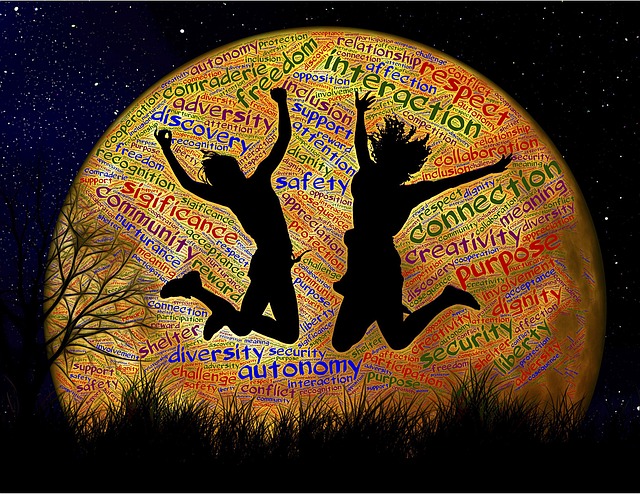“Leadership is a privilege afforded to you, the leader, by the people you are privileged to lead.” Renita Alexander. Tweet this now!
Have you ever had a leader go off in a meeting? If watching your leader loose control felt scary that’s because it probably triggered some immediate, primitive emotions in your emotional center, the limbic brain. Your heartbeat may have increased; you may have felt stressed or even experienced an immediate need to leave the meeting. And if the outburst and your negative reaction to it impacted you for the rest of the meeting or even longer, that’s not surprising either; once your emotions have been hijacked like this, it takes concerted effort to reign them back in.
How you respond or react to any emotional stimuli is, of course, your responsibility; an emotionally intelligent leader tries to avoid YOUR negative reaction by controlling how HE perceives and reacts to input.
Emotional Intelligence (EQ) guru Daniel Goleman writes in Primal Leadership that the fundamental task of the leader is to prime good feelings in those she is privileged to lead and “that occurs when the leader creates resonance – a reservoir of positivity that frees the best in people”.
“The fundamental task of the leader is to prime good feelings in those she is privileged to lead.” Daniel Goleman. Tweet this now!
The ability to consistently prime the pump of positivity requires EQ competencies like self-awareness and control. The opposite of resonance is dissonance; a dissonant leader throws people off balance and negatively impacts their performance.
I once worked with a visionary leader, which is considered to be the most effective leadership style. Unfortunately, in a crisis or when his triggers were activated, this leader often TURNED ON and then TUNED OUT others. That prevented him from being able to hear what people were saying at the very moment he MOST needed to listen. He lacked the ability to recognize his triggers or the self-control to respond instead of react in a crises and instead of priming good feelings, frequently created dissonance among his team. The resulting culture was one where other team members were reluctant to speak for fear of setting off an explosion. I personally left many a meeting discombobulated, disengaged and unable to do what I needed to.
Dissonant leaders can be effective in the short term but the toxicity they create usually negatively impacts the forward movement of the team as well as the bottom line. You can avoid negatively infecting your team by learning to lead yourself!
The ONE thing, the most important thing, and the hardest leadership challenge is leading yourself.
The hardest leadership challenge is leading yourself. Tweet this now!
That requires some understanding of you! What drives you bonkers? What do you believe about leadership? Who are some leaders that you admire? How did your immediate, intimate leadership models make you feel? You CAN become a better leader but it requires some self-development and maybe some outside, objective assistance.
Follow these steps to leading a better YOU!
Step 1: Study YOU!
Before you can become the leader you want to be, you have to know the leader you are. Self-awareness is the first step to leading yourself so spend some time understanding you…what makes you feel elated…what makes you want to stick a pencil in your eye? How do you like to receive information? What do you need to make decisions? Are you empathetic? When talking to others, are you listening to what they’re saying or just listening for a break in the conversation?
Be cognizant of your triggers, the words and actions that set you off but understand ultimately, your reaction is all about you! Do people who play the victim role make you crazy! And then make sure you’re not projecting your own experience; are others really being victims, or are you seeing victims because of your OWN victim experience.
Step 2: Study Leadership!
What makes a good leader? Many entrepreneurs focus on a business plan, attracting capital, hiring employees with no thought as to how they will LEAD their enterprise. Leadership is an art that comes easily to many people, however it can be learned and even natural leaders can fine-tune their skills to be even better.
Leadership can be learned and even natural leaders can fine-tune their skills to be even better. Tweet this now!
We can only be really good at something we have a talent for so find out what leadership characteristics come naturally to you and focus on developing those. And then try to minimize the possible negative impact of any weakness in key leadership characteristics like communication.
I was blessed to be a part of an organization with a unique tradition of experiential leadership development. None of the military branches have the luxury of hiring a “CEO” at any level from an external source, so the leadership training starts early and happens frequently. As I young officer, I was exposed to formal training, informal and formal mentoring from my superior officers and the special “polishing” that can only come from the senior non commissioned officers! I learned what worked for me, what fit my personality and I looked at each new assignment as an opportunity to reinvent myself as a leader, to take the good and not so good experiences I created or witnessed and apply them with a new team.
Step 3: Listen to Feedback!
Your mom and MAYBE one of your grandparents are the only two people who believe you’ve never made a mistake, EVER. Everyone else has some constructive criticism, an observation, and some feedback they’d like to share about something you’ve done or said. If you truly believe they have the best interests of the enterprise at heart then try to listen to what they’re saying without judgment.
Feedback was an informal, then formal part of the leadership development I experienced in the Air Force. Sometimes the feedback was hard to hear but it gave me a glimpse as to whether what I thought I was projecting was actually being perceived in the way I intended. I had to work on not being defensive and just listen to the lesson and then decide if and how to incorporate it into my leadership.
Leading yourself well is the first crucial step to leading an any enterprise!
So be intentional about how you’re leading by learning yourself and learning from others.
Something to think about:
Do you know how your leadership is affecting your team or your enterprise?
Renita Alexander, Leadership Unlocked










